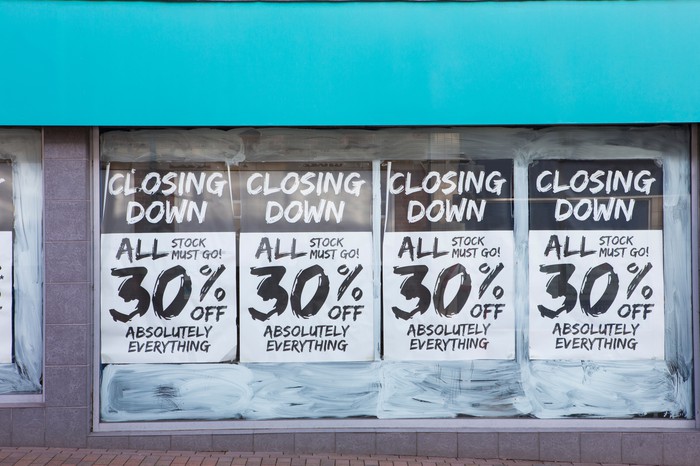Why this Mattress Company Went Belly Up
News that Mattress Firm, a U.S. subsidiary of South African firm Steinhoff International Holdings NV., would file for Chapter 11 bankruptcy protection didn’t surprise many onlookers. When Steinhoff purchased the Houston-based firm just two years ago for $3.8 billion, paying $64 per share for the then $29-per-share company, both were feverishly snapping up competitors in mattress retailing and the broader furniture industry. Less than one year before that, Mattress Firm purchased the Sleepy’s chain of mattress retailers for $780 million, an acquisition that saw its retail locations climb to 3,500.
Since the financial reorganization (which includes immediately closing 200 stores and terminating 700 unfavorable leases) was announced on October 5, Mattress Firm’s collapse has been explained as the result of heated online competition or of “over-retailing.” At least one competitor has taken a self-appointed victory lap in the wake of the news.
But these explanations are insufficient, only describing manifestations and scenery — the equivalent of explaining why something descends to earth when dropped by calling it “falling” rather than referring to the force of gravity.
Whatever the specific nature of their missteps, one can be reasonably sure that both Mattress Firm’s and Steinhoff’s executives were well-aware of both the threat posed by various competitors and the general prospects for online retailing. Rather than ask whether they were caught off-guard, a better question would be: why did Steinhoff International and Mattress Firm pursue the commercial options — for example, rapid expansion via acquisitions and undertaking the costly process of quickly rebranding acquired locations — that they did?
Debt and Entrepreneurial Error
First, Mattress Firm’s condition is not unique. The list of reorganizing or liquidating U.S. retailers has been mounting for two years, and hit an all-time high in the first quarter of 2018. Fourteen major retailers have filed for bankruptcy this year, with a number of prominent chains in precarious financial condition. There is therefore a clear cluster of distress growing in one particular sector, although others are beginning to show signs of weakness as well.
Second, the history leading up to Mattress Firm’s bankruptcy filing last Friday evinces a pattern of questionable business decisions, not one misstep or two. Mattress Firm had gone from approximately 500 stores to 3,500 stores in four years, accumulating $1.3 billion of debt and $2.7 billion in off–balance sheet liabilities. Steinhoff was not only highly leveraged, but recently experienced an accounting scandal that concluded with a massive writedown, requiring asset sales to keep the company afloat.
Thus a highly leveraged firm emerging from a recent accounting scandal purchased a highly leveraged firm which had recently expressed a doubtful profit outlook for a 115 percent premium, after only five days of due diligence. (In some locations, the result of Mattress Firm’s hyperactive pace of acquisition is immediately apparent.)
What both the Mattress Firm derailment and the broader retail strain have in common are high levels of debt and evidence of dubious entrepreneurial judgment. Historically, unsustainable debt service levels and distorted commercial decision-making are frequently precipitated by artificially low interest rates.
Low Interest Rates
In fact, a disproportionate number of the retail firms currently experiencing distress or in the process of reorganizing (liquidating, in some cases) were leveraged-buyout targets in the recent past. The LBOs are one facet of a massive corporate debt bubble that has been steadily inflating over the past decade, prompted by the Federal Reserve’s slashing of interest rates to record-low levels.
With trillions of dollars created via three quantitative-easing programs, cheap debt is not only easily issued, but readily serviced. Yield chasing went international as corporate bond prices skyrocketed and yields plummeted: total corporate debt now stands at 45 percent of U.S. GDP, an all-time record. Corporate America has been on a debt binge with record-low rates for the past decade: $4.4 trillion worth of corporate debt assumed ($1.3 trillion of which falls into the high-yield category), all of which will be due by the end of 2022.
It is no coincidence that debt distress has been accelerating since 2016, considering that the Fed began hiking rates again in December 2015.
Despite panicked rhetoric, it would be more accurate to say that the pressure put on Mattress Firm and other retailers by Amazon — which increased efficiencies and lowered prices by harnessing Big Data and implementing automation — drove them, amid the availability of financing options at near-zero interest rates, to assume inadvisably high levels of debt. That debt, in turn, was utilized for expansion, acquisitions, and other projects that have since proven uneconomic.
Mattress Firm is out of the game for now, but as rates rise, balance sheet distress for many other retail firms — indeed, any companies that are highly leveraged — will mount. Yet even more risk is posed by the possibility that with near full employment and rising levels of output the Fed may decide that the U.S. economy is overheating and accelerate its interest rate hiking program. Rates increasing at a measured pace would cause pain for firms already having problems serving their debt, but a quicker-than-expected rise in rates would add a nonlinear dimension to the losses.
As it stands, the continuing retail fallout looks less like the result of unfair competition (much less conspiracy) than the classic exposure of malinvestment.





